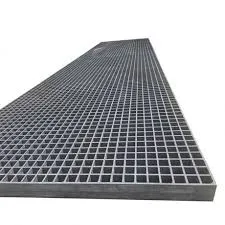
-
 Afrikaans
Afrikaans -
 Albanian
Albanian -
 Amharic
Amharic -
 Arabic
Arabic -
 Armenian
Armenian -
 Azerbaijani
Azerbaijani -
 Basque
Basque -
 Belarusian
Belarusian -
 Bengali
Bengali -
 Bosnian
Bosnian -
 Bulgarian
Bulgarian -
 Catalan
Catalan -
 Cebuano
Cebuano -
 China
China -
 China (Taiwan)
China (Taiwan) -
 Corsican
Corsican -
 Croatian
Croatian -
 Czech
Czech -
 Danish
Danish -
 Dutch
Dutch -
 English
English -
 Esperanto
Esperanto -
 Estonian
Estonian -
 Finnish
Finnish -
 French
French -
 Frisian
Frisian -
 Galician
Galician -
 Georgian
Georgian -
 German
German -
 Greek
Greek -
 Gujarati
Gujarati -
 Haitian Creole
Haitian Creole -
 hausa
hausa -
 hawaiian
hawaiian -
 Hebrew
Hebrew -
 Hindi
Hindi -
 Miao
Miao -
 Hungarian
Hungarian -
 Icelandic
Icelandic -
 igbo
igbo -
 Indonesian
Indonesian -
 irish
irish -
 Italian
Italian -
 Japanese
Japanese -
 Javanese
Javanese -
 Kannada
Kannada -
 kazakh
kazakh -
 Khmer
Khmer -
 Rwandese
Rwandese -
 Korean
Korean -
 Kurdish
Kurdish -
 Kyrgyz
Kyrgyz -
 Lao
Lao -
 Latin
Latin -
 Latvian
Latvian -
 Lithuanian
Lithuanian -
 Luxembourgish
Luxembourgish -
 Macedonian
Macedonian -
 Malgashi
Malgashi -
 Malay
Malay -
 Malayalam
Malayalam -
 Maltese
Maltese -
 Maori
Maori -
 Marathi
Marathi -
 Mongolian
Mongolian -
 Myanmar
Myanmar -
 Nepali
Nepali -
 Norwegian
Norwegian -
 Norwegian
Norwegian -
 Occitan
Occitan -
 Pashto
Pashto -
 Persian
Persian -
 Polish
Polish -
 Portuguese
Portuguese -
 Punjabi
Punjabi -
 Romanian
Romanian -
 Russian
Russian -
 Samoan
Samoan -
 Scottish Gaelic
Scottish Gaelic -
 Serbian
Serbian -
 Sesotho
Sesotho -
 Shona
Shona -
 Sindhi
Sindhi -
 Sinhala
Sinhala -
 Slovak
Slovak -
 Slovenian
Slovenian -
 Somali
Somali -
 Spanish
Spanish -
 Sundanese
Sundanese -
 Swahili
Swahili -
 Swedish
Swedish -
 Tagalog
Tagalog -
 Tajik
Tajik -
 Tamil
Tamil -
 Tatar
Tatar -
 Telugu
Telugu -
 Thai
Thai -
 Turkish
Turkish -
 Turkmen
Turkmen -
 Ukrainian
Ukrainian -
 Urdu
Urdu -
 Uighur
Uighur -
 Uzbek
Uzbek -
 Vietnamese
Vietnamese -
 Welsh
Welsh -
 Bantu
Bantu -
 Yiddish
Yiddish -
 Yoruba
Yoruba -
 Zulu
Zulu
Innovative Techniques for Fiberglass Dual Lamination in Modern Composite Manufacturing Processes
Understanding Fiberglass Dual Lamination A Comprehensive Overview
Fiberglass dual lamination is a specialized technique that combines two layers of fiberglass with an underlying core material to create highly durable, lightweight, and versatile products. This process is extensively utilized across various industries, including automotive, aerospace, construction, and marine. The advantages of fiberglass dual lamination stem from its ability to produce composite materials that are not only strong but also resistant to environmental factors such as corrosion, moisture, and UV radiation.
The Lamination Process
The creation of fiberglass dual lamination begins with the selection of appropriate materials. Fiberglass, a composite material consisting of fine glass fibers woven together, serves as the primary structure due to its exceptional tensile strength and rigidity. The core material, which may be made of foam or honeycomb structures, provides additional support while reducing weight.
The lamination process itself typically involves the application of resin, which binds the layers together. There are several types of resins available, including polyester, epoxy, and vinylester, each offering unique properties suitable for different applications. After applying the resin, the fiberglass layers are pressed onto the core material and cured, either at room temperature or through heat and pressure.
This method ensures that the finished product exhibits high strength-to-weight ratios and excellent structural stability. The dual-layer setup also enhances the material’s impact resistance, making it suitable for demanding applications where durability is crucial.
Applications of Fiberglass Dual Lamination
The uses of fiberglass dual lamination are vast
. In the automotive sector, for example, it is employed in the production of lightweight components that improve fuel efficiency without compromising safety. The aerospace industry utilizes dual laminated fiberglass for crafting fuselage components and wings, where both strength and weight savings are essential for performance.fiberglass dual lamination

In construction, fiberglass dual lamination serves in applications like roofing and wall panels. Its resistance to weathering makes it an ideal choice for structures exposed to the elements. Furthermore, it is also used in creating swimming pools and aquaculture tanks due to its excellent waterproofing capabilities.
Marine industries benefit greatly from this technology, as boats and yachts constructed with fiberglass dual lamination manifest superior hydrodynamic properties, reducing drag and increasing fuel efficiency. Additionally, these materials are resistant to the corrosive effects of saltwater, ensuring a longer lifespan for marine vessels.
Benefits of Fiberglass Dual Lamination
The core advantages of fiberglass dual lamination lie in its composite construction. First and foremost, the combined properties of strength and lightweight design allow for innovative engineering solutions that enhance performance. This is particularly important in industries where weight reduction can lead to significant improvements in efficiency and speed.
Moreover, the corrosion and chemical resistance offered by fiberglass dual lamination provides enhanced longevity, reducing maintenance costs over time. Additionally, advancements in manufacturing techniques have improved the consistency and quality of laminated products, making them a reliable choice for designers and engineers.
Conclusion
In summary, fiberglass dual lamination stands out as a pivotal technology in modern manufacturing, combining the benefits of fiberglass with innovative lamination techniques to produce materials that meet the demands of various industries. As technology continues to evolve, it is expected that the applications and efficiency of fiberglass dual lamination will expand even further, fostering new opportunities in engineering and design. As we look forward, the importance of advanced composite materials like fiberglass dual lamination will undoubtedly continue to play a crucial role in shaping the future of numerous sectors.
Latest news
-
High-Quality Fiberglass Car Bodies Durable GRP Car & Boat Body SolutionsNewsJul.08,2025
-
High-Quality Fiberglass Dual Lamination Product Manufacturer Durable FRP & GRP Dual Lamination SolutionsNewsJul.08,2025
-
Rectangular Tank with Dimensions for GRP Calculation Custom Fiberglass GRP Rectangular TanksNewsJul.07,2025
-
High-Quality Fiberglass Weir Custom FRP Weir & Fiberglass Tanks ManufacturerNewsJul.07,2025
-
CPVC FRP Pipe A Reliable Choice for Industrial Applications High Strength & Corrosion ResistanceNewsJul.07,2025
-
Fiberglass Scrubber for Effective Cleaning and Stain Removal – Superior Performance in Various ApplicationsNewsJul.06,2025









